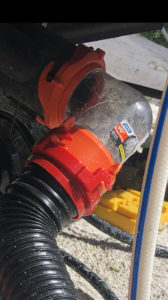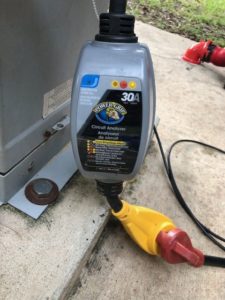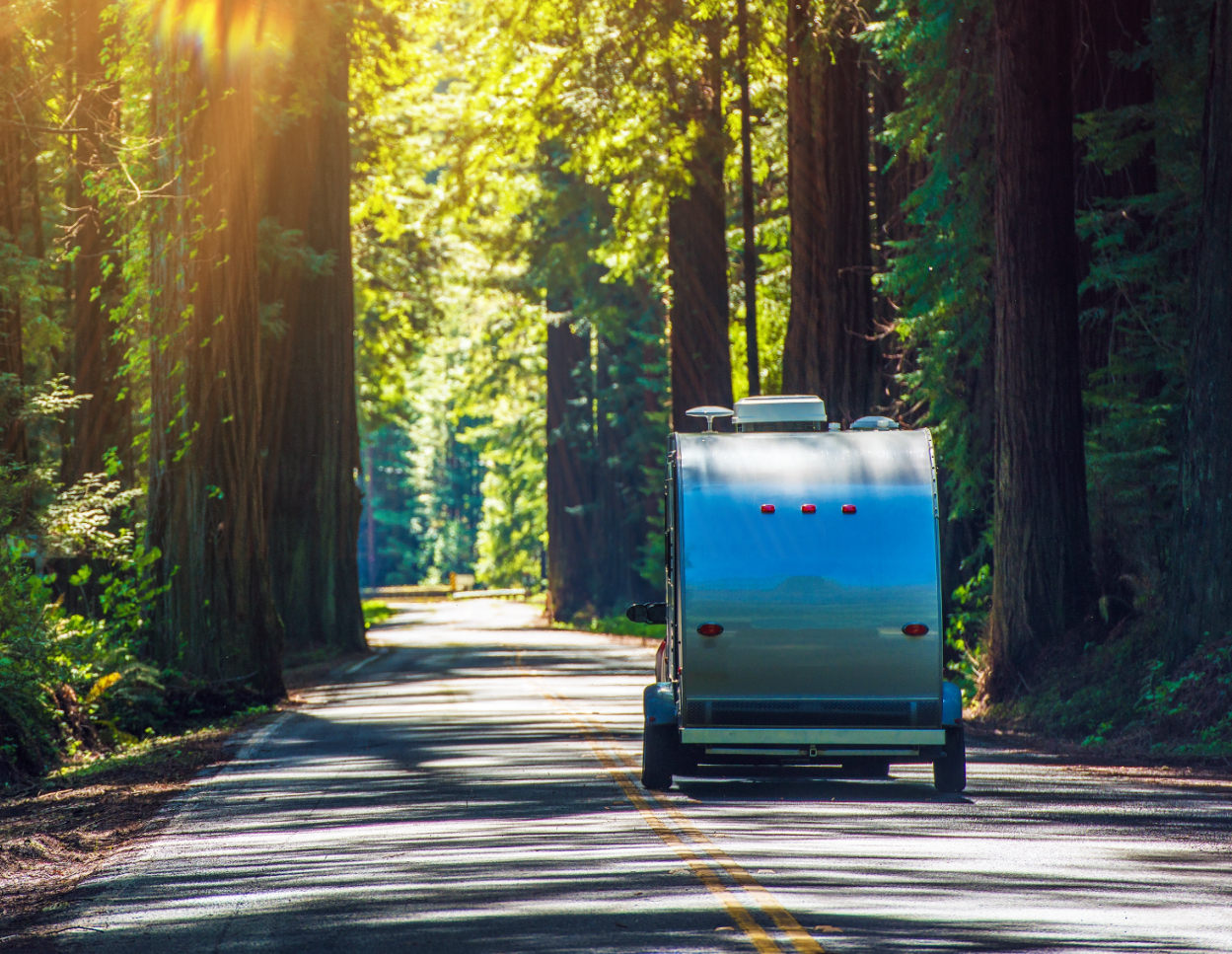
Bought or buying an RV? That check you wrote or the finance agreement you’ll sign is only the start of the cash outflow. But don’t think of it as some investment that keeps on sapping your bankbook. Leave that to boat owners. Shopping for your camper is exciting. Not as thrilling as buying that clear acrylic elbow attachment for the sewer pipe to watch the tanks eventually run clear while dumping. But it’s close.
You’ll want camping supplies and festival accessories and chairs and tables and stuff for sitting around the campfire and creating the the perfect campsite. Consider this your post-holiday list of must-have gadgets for RV and festival camping.
 We’ve divided this list into stuff everyone who RVs may want or need to sand smooth the rough edges of camping life (like a 5/8th inch socket for your power drill to lower and raise your manual scissor stabilizer jacks, and for festival campers, like the ID clips you’ll use to hold up the tapestries that’ll make the perfect chill encampment). That’ll come later.
We’ve divided this list into stuff everyone who RVs may want or need to sand smooth the rough edges of camping life (like a 5/8th inch socket for your power drill to lower and raise your manual scissor stabilizer jacks, and for festival campers, like the ID clips you’ll use to hold up the tapestries that’ll make the perfect chill encampment). That’ll come later.
Some of these are from our own experiences; some we nicked along the road. So, in no particular order, enjoy…
Rear view mirror extensions. Not all tow vehicles come equipped with mirrors large enough or that extend far enough to see safely down the trailer. Our Snap n Zap clip-on mirror set provides a clear view down the sides. They’re designed for a variety of trucks; those for our F150, for example, have cut outs for the turn signals and the step light. Silly name, great product. Best 50 bucks we’ve invested in safety so far.
That 5/8th inch socket. Have you tried lowering and raising the scissor stabilizer jacks with the clunky wrench that comes with the RV? Not easy. Slip the socket with attachment into the power drill, tighten the chuck, and you’ll turn a 90-second job into about 3-5 seconds – max. Remember to fully charge the battery before leaving. If it’s healthy, it’ll last your entire trip (if not, bring the charger).
Secondarily, we always carry a T or cross-wrench – for the times we’ve forgotten the power drill (it happens; there’s a lot to remember when packing up).
Water filters, water pressure regulator and garden hose spigot splitter. Hooking up to a campsite’s city water source isn’t just about attaching your hose and turning the valve. Who knows what debris flows in their water – or whether the pressure will blow out your RV’s water pipes? We start by attaching a Y-splitter to the spigot. We hook up the city water line to one output, and leave the other open in case we need an extra water source.
 As long as we’re hooking up, do you use a surge protector? (don’t admit if you don’t – just buy one: 30 Amp or 50 Amp). Might want a “dog bone” that’ll step the power post down from 50A to 30A if the 30A is kaput.
As long as we’re hooking up, do you use a surge protector? (don’t admit if you don’t – just buy one: 30 Amp or 50 Amp). Might want a “dog bone” that’ll step the power post down from 50A to 30A if the 30A is kaput.
Next, with one of several hoses we keep on board, we use a longer hose to make the run from the spigot to the RV, then attach the filter, then use a two-footer to complete the run. A brass 90-degree elbow ensures the weight of the waterline and filter aren’t putting pressure on the connection.

Extra tool kit. We’ve blogged before about tools that round out the onboard kit. It included things like cables and lug wrench, zip ties, duct tape, a couple different screwdrivers, a pair of channel locks, an adjustable wrench, and some wire cutters.
Other stuff filed under miscellany: A whisk broom for the truck and bed; a saw for lumber or firewood; a few rolls of shop towels; and a compressor to top off the tires.
 First-Aid Kit. Beyond basic care – and in the age of COVID-19, which calls for masks and sanitizer – REI suggested antiseptic wipes, antibacterial ointment, gauze pads, adhesive bandages, and butterfly bandages; wraps, splints and wound coverings; and medications and treatments. Maybe include aloe vera gel, and insect sting relief. Consider surgical or blunt-tip scissors, cotton swabs, even an oral thermometer. Atop those, they discussed sunscreen, lip balm, even insect repellent. We read about a ZipStitch Laceration Kit, for when injuries go deep.
First-Aid Kit. Beyond basic care – and in the age of COVID-19, which calls for masks and sanitizer – REI suggested antiseptic wipes, antibacterial ointment, gauze pads, adhesive bandages, and butterfly bandages; wraps, splints and wound coverings; and medications and treatments. Maybe include aloe vera gel, and insect sting relief. Consider surgical or blunt-tip scissors, cotton swabs, even an oral thermometer. Atop those, they discussed sunscreen, lip balm, even insect repellent. We read about a ZipStitch Laceration Kit, for when injuries go deep.
Create your own kit, using guidance from the Red Cross.
Other accessories worth picking up: A Ohuhu collapsible ladder (for working on the vehicle exterior, like tending to roof vent covers, installing RV gutter drip extenders; or hanging festival tapestries); and a pair of rubber wheel chocks for parking the RV.
As long as we’re setting up, who RV camps in the dirt? An outdoor rug cuts the dirt and debris and creates a more civilized campsite. Made of durable woven plastic, it washes with a hose (we string it up and hit it with a hose), then folds up for storage in the pass through. We also have another for the outdoor kitchen.
 Are you fans of the fan? We have a 9-inch fan in our RV bedroom, another in the living area to move air and keep it cool, and a Lasko high velocity utility fan (and a commercial-grade extension cord) that we use to cool us outside, keep flying pests away, or dry wet gear and chairs. Even our terrier Stella will find a perch in its flow to keep cool. Smart pup.
Are you fans of the fan? We have a 9-inch fan in our RV bedroom, another in the living area to move air and keep it cool, and a Lasko high velocity utility fan (and a commercial-grade extension cord) that we use to cool us outside, keep flying pests away, or dry wet gear and chairs. Even our terrier Stella will find a perch in its flow to keep cool. Smart pup.
If a fan isn’t enough to curb the bugs, blast their little asses. The Bug-A-Salt is a wicked cool “shotgun” that makes taking out flies and other pests. Pour in some standard table salt, give it a few pumps, and neutralize ’em. A hanging bug trap can catch the pests, or a tennis racket-style electronic fly and insect swatter will work on your forehand while serving the bugs into another zone.
 Then there’s the little things that make a big difference. A Camco screen door cross bar handle makes opening and closing the door easier and even protects the handle. Have a dog? A screen door protector is an inexpensive insurance policy to keep pets or kids going through the screen.
Then there’s the little things that make a big difference. A Camco screen door cross bar handle makes opening and closing the door easier and even protects the handle. Have a dog? A screen door protector is an inexpensive insurance policy to keep pets or kids going through the screen.
Add an acrylic elbow for the sewer hose, maybe a few tubs of Happy Camper holding tank treatment for good measure, it’s easy rack up the accessories. You’ll easily spend $1,000 – if you’re lucky.
And you thought you got off easy with that sweet, low-rate financing.
